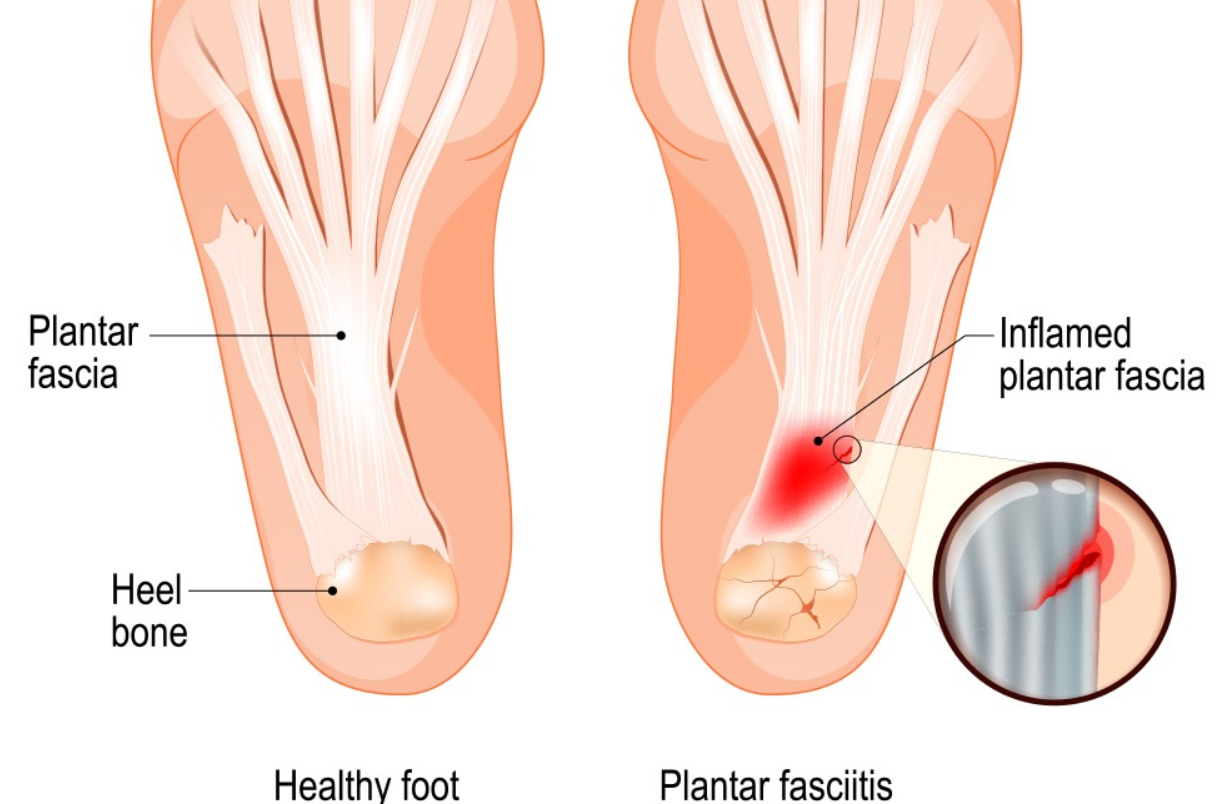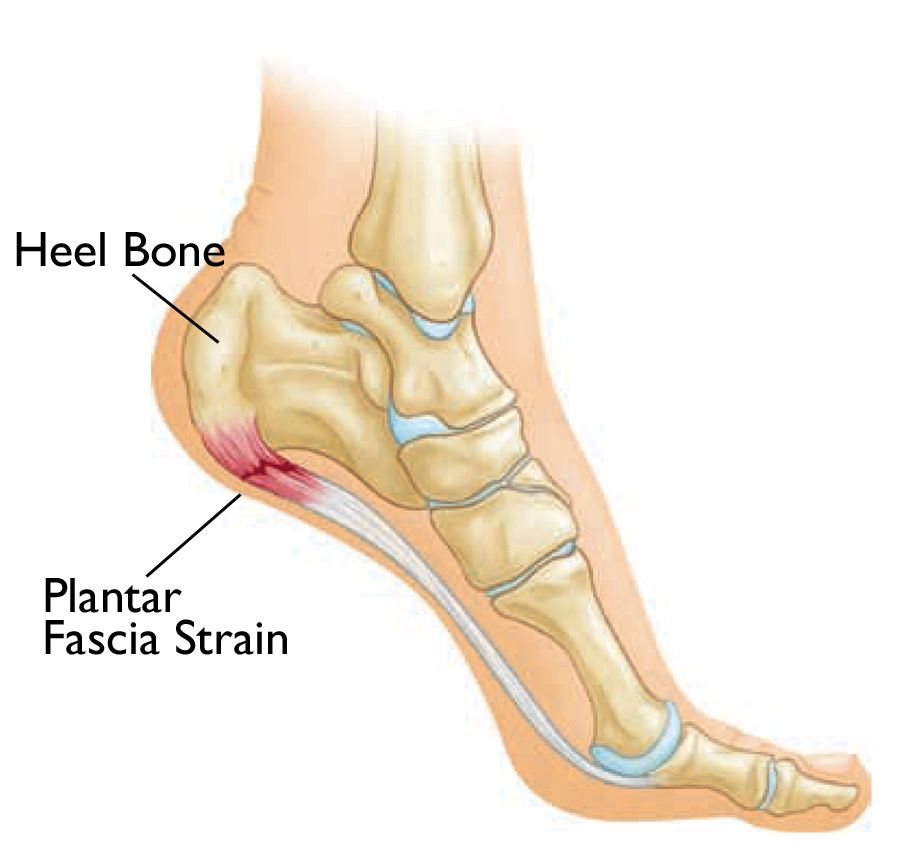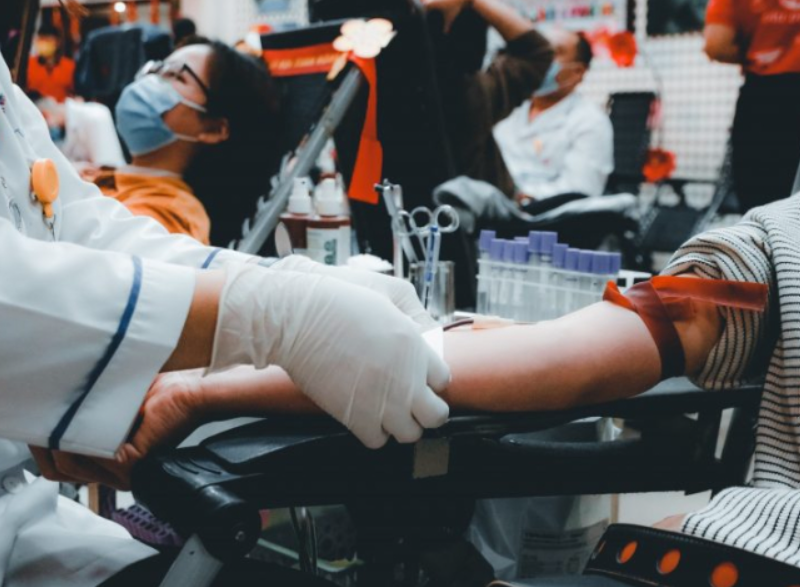The condition known as “jogger’s heel” or plantar fasciitis causes discomfort in the heel and sole of the foot. This problem actually indicates that the fibrous, tense tissue (fascia) that connects your heel bone to the base of your toes has become inflamed. The majority of the time, it results from strenuous physical activity, prolonged standing, or jogging.
Causes
The pain from jogger’s heel, according to many who experience it, is unbearable and feels like someone is hammering nails into their heels.
People who work in occupations that require prolonged standing are frequently more susceptible to acquiring plantar fasciitis. There are many factors that might contribute to this problem, such as bone spurs, flat feet, high arches, and strenuous exercise.
Furthermore, because extra weight exerts extra strain on the foot, those who are overweight are more likely to develop Plantar Fasciitis. Additionally, people’s footwear, such as worn-out or poorly built shoes, might contribute to this problem. Plantar Fasciitis can also result from the use of shoes with inadequate heel cushioning.
Symptoms
Pain that is generally scorching, stinging, stabbing, or throbbing is a symptom of plantar fasciitis. The pain typically originates in the center of the foot, although it may also spread to the toes or heel.
Find out more about: Create the Most Powerful Antibiotic Using Only Natural Components
When patients first get out of bed in the morning, the pain is typically very acute. There are situations where the discomfort lasts the entire day, while there are others where it progressively lessens. These pains typically endure for a longer period of time—months or even years—because this illness is chronic.
Treatments
If not treated promptly, plantar fasciitis can become exceedingly painful and have more severe repercussions. Fortunately, there are many efficient treatments that might aid in your recovery. The R.I.C.E. treatment, wearing special orthotic and orthopedic shoes and splints, dietary adjustments, fascia stretching, and fascia strengthening are some of the most efficient ways to treat the issues.
The R.I.C.E. treatment, also known as rest, icepack application, compression, and elevation, is the most successful approach. Nearly 25% of people with plantar fasciitis had the best improvements, according to research. Additionally, dietary changes have also demonstrated significant effects. Because zinc and magnesium can repair damaged tissue, you should consume more of these nutrients.
Traditional remedies
Both conventional and natural treatments have had positive outcomes in the management of this problem. Following are some of the most notable:
- Honey and salt are compressive. Apply a combination of equal parts salt and honey to the afflicted area. After that, cover the area with gauze and secure it with a plaster. Place a nylon bag over the feet, bandage them, put on socks, and leave overnight.
- Potato envelops. These will lessen the excruciating discomfort. When ready, place the washed, unpeeled potatoes on the gauze and apply it to the affected region. Put socks on top of the nylon bag bandage to protect your feet. The wrapping must be changed every day, and the process must be repeated for 7-8 days.
- Simply softly tap your heel on the floor a few times each day to boost calcium circulation, enhance metabolism, and avoid salt buildup.




